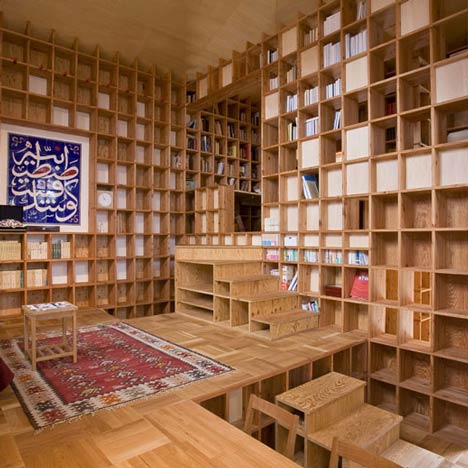
Shelf-Pod by Kazuya Morita Architecture Studio
This house by Kazuya Morita Architecture Studio in Osaka Prefecture, Japan, is completely lined with with pine shelves to display the owners' extensive collection of books.
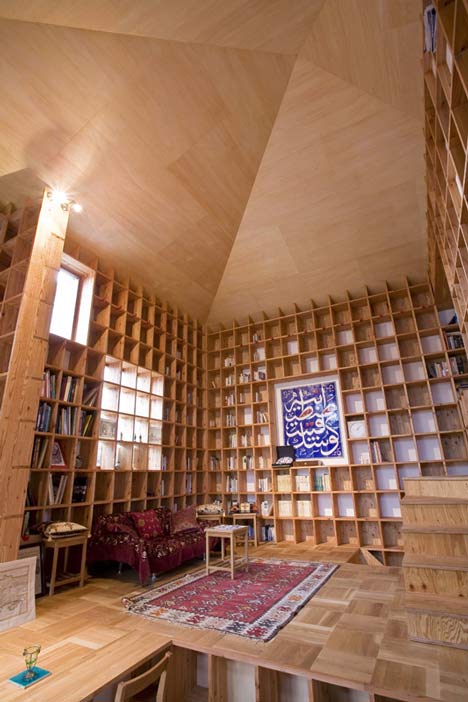
Called Shelf-Pod, the house features interlocking laminated pine-boards that slot together to form the latticed shelving units.
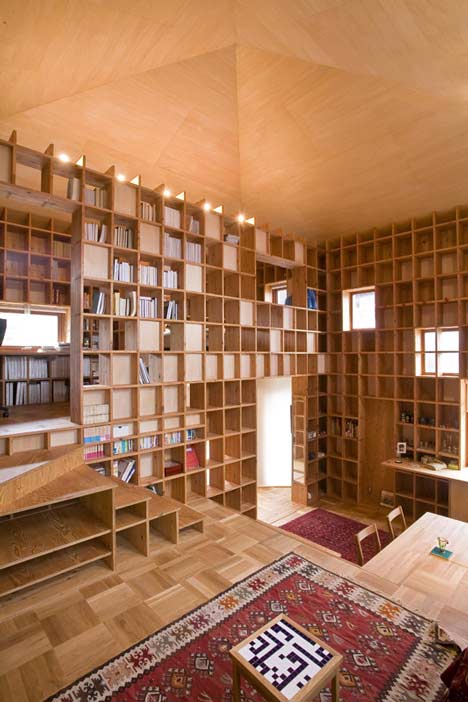
The interior has a pyramid-shaped ceiling and wooden platforms of differing heights that form steps, tables and flooring.
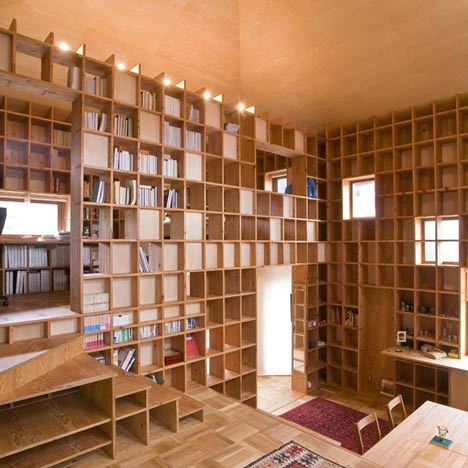
More Japanese houses on Dezeen »
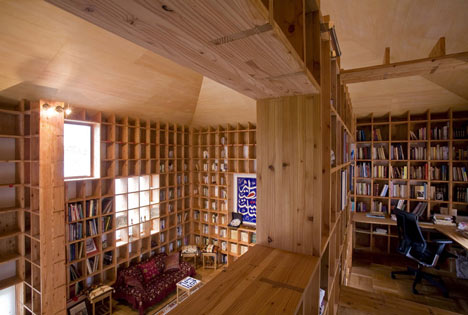
More residential architecture on Dezeen »
The following information is from the architects:
Shelf-Pod is a private residence located in Moriguchi City, Japan. The client owns an extensive collection of books on the subject of Islamic history, so he requested us to design this architecture not only for living, but would have the maximum capacity for its storage and exhibition.
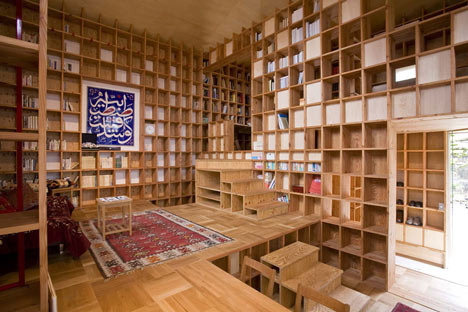
In order to satisfy this demand effectively, we designed a lattice structure made from 25mm thick laminated pine-board what serves as book-shelve.
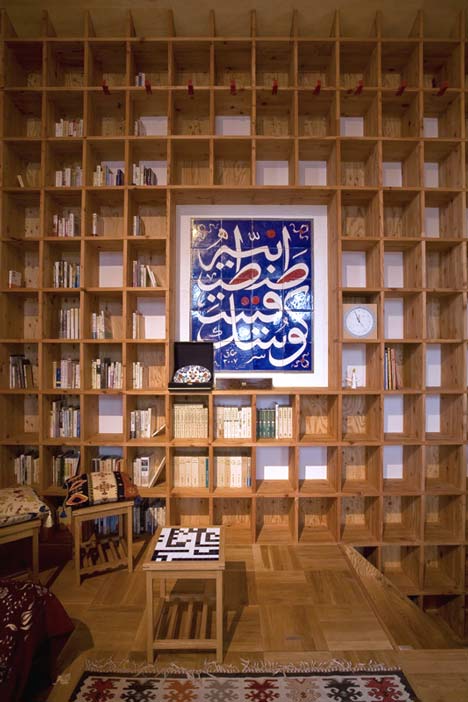
The dimensions of each shelf are as follows: 360mm height, 300mm width and 300mm depth. All of the architectural elements in this space (stairs, windows, desks, chairs, etc) have been designed on the basis of this shelf scale, with the aim of achieving geometrical harmony that is comparable to Islamic Architecture.
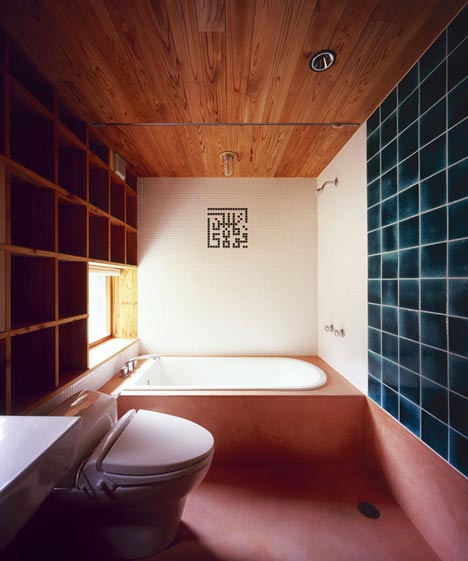
This innovative structural system affords not only large amount of book storage, but the possibility of flexible floor level which is delivered from height of bookshelf. Each space for different activity rise up helically, giving the impression of exploring a wooden jungle gym.
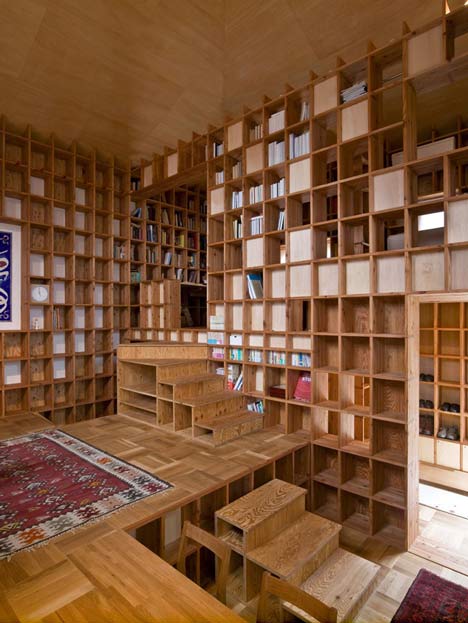
The original image of this structure is derived from the Japanese woodcraft of Kumiko. The structural integrity against the earthquake is provided by a panel of plywood board nailed on the shelf. Initially, the horizontal resistant force guaranteed by the panels was examined in a real-scale model.
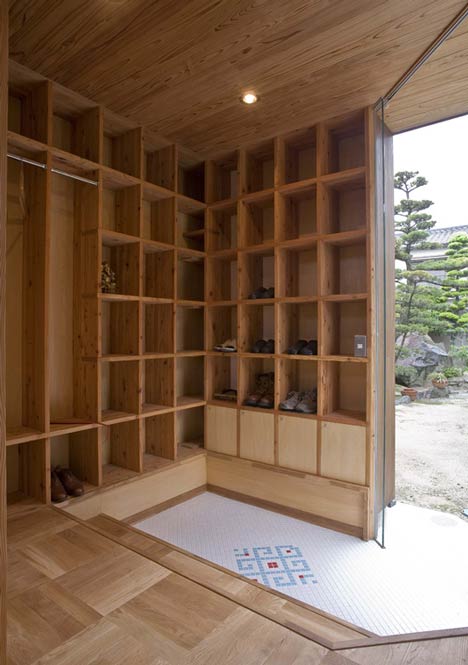
Further to this, an analysis of the whole structure was performed in order to determine the placement of the windows and panels.
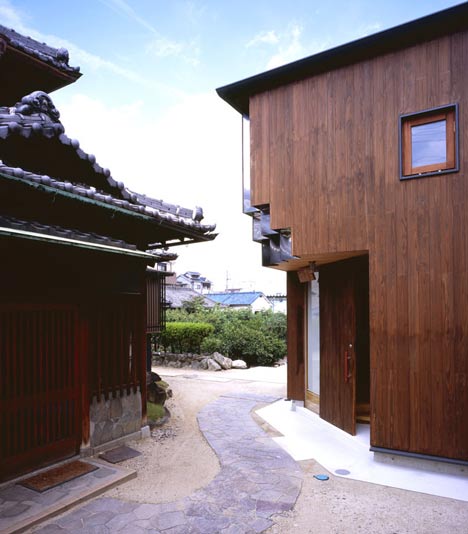
The inter-locking laminated pine-board was manufactured precisely in advance and assembled on-site. Similarly, the pyramid-shaped roof was assembled on-site, from 12 pieces of prefabricated wooden roof panel.
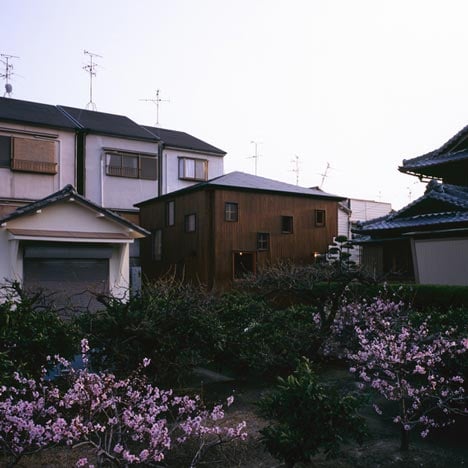
The completed roof has a thickness of only 230mm and sensitively covers the whole space like the dome of a Mosque.
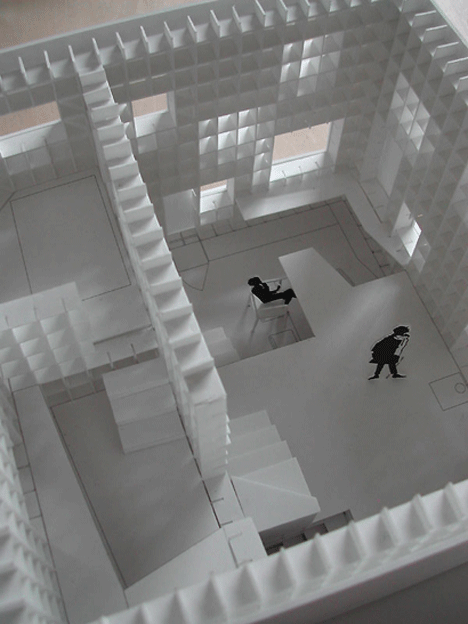
As oppose to its unique structure, the outer wall employs the construction techniques of a traditional Japanese storehouse Dozou.
Click for larger image
The bamboo net wall foundation layer was attached to the lattice structure and the clay and straw mixture was applied to the foundation by the trowel. Then the red cedar panels forms exterior wall.
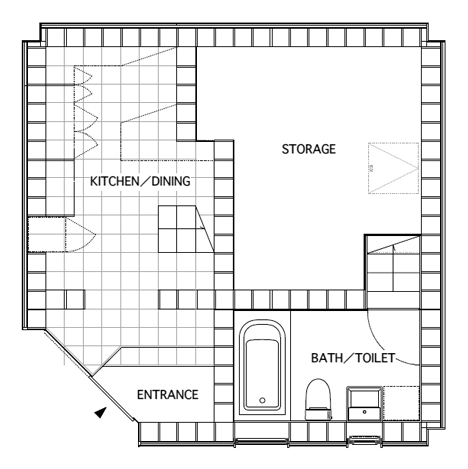
The interior clay wall was finished with white plaster. These techniques are in accordance with urban fireproofing specifications, as well as maintaining a suitably humid environment for the storage of books.
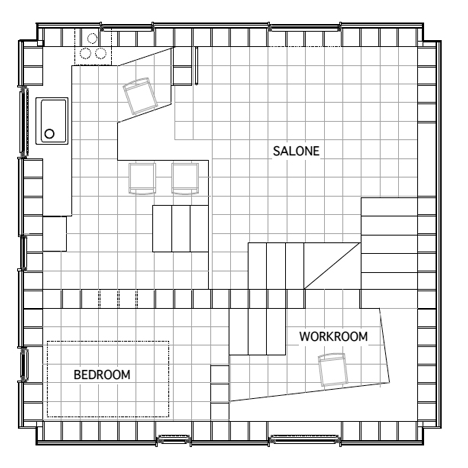
DETA
Design : Kazuya Morita Architecture Studio
Structural engineer : Mitsuda Structural Consultants
Date of completion : August 2007
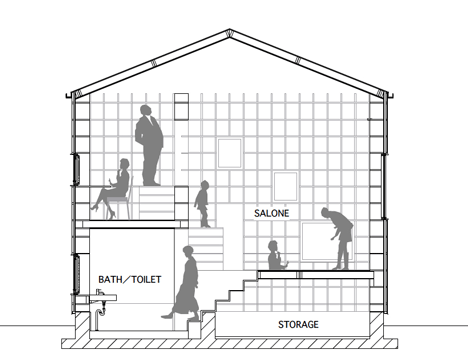
Click for larger image
1st floor 38.34 square meter
2nd floor 13.44 square meter
total 51.78 square meter
See also:
.
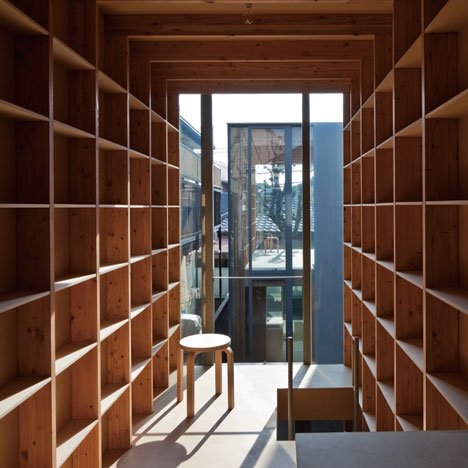 |
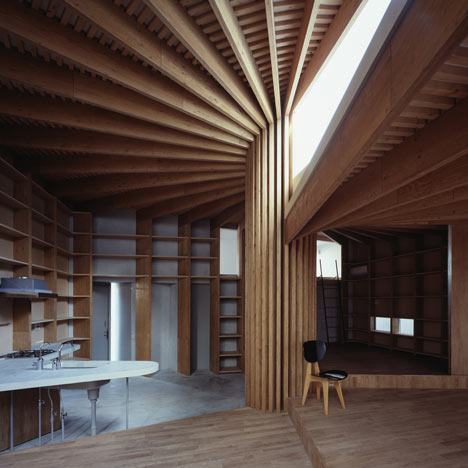 |
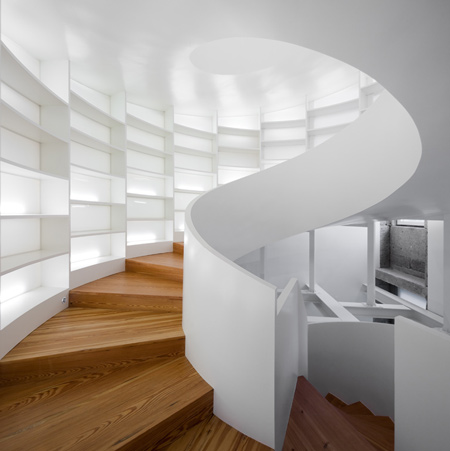 |
| Near House by Mount Fuji Architects Studio |
Tree House by Mount Fuji Architects Studio |
House Antero de Quental by Manuel Maia Gomes |